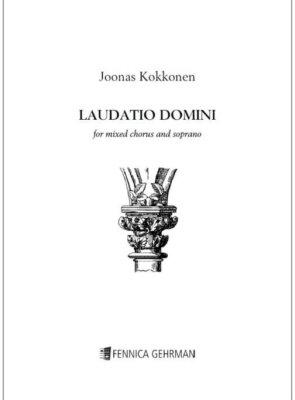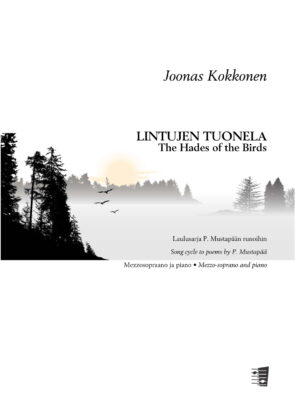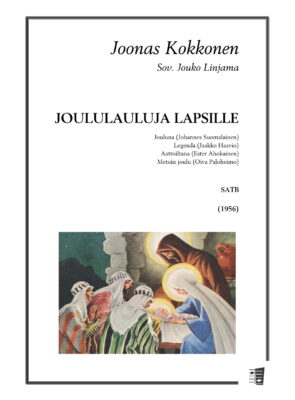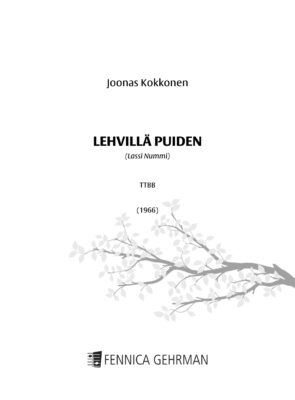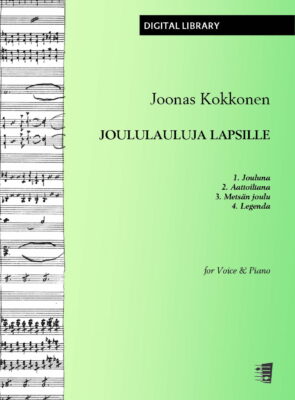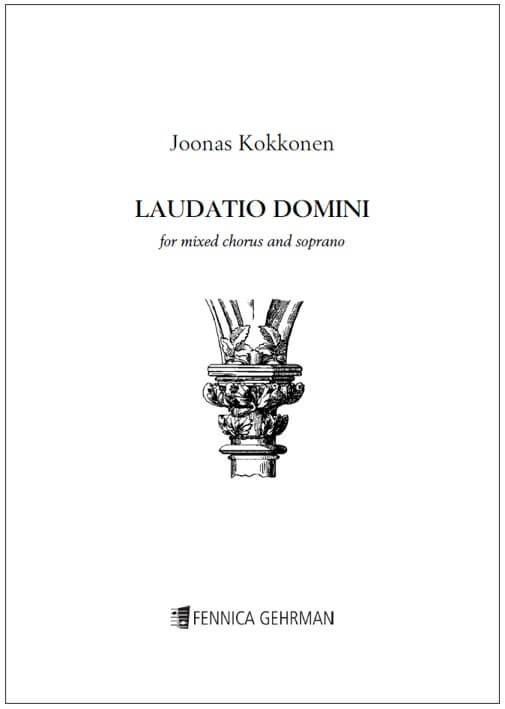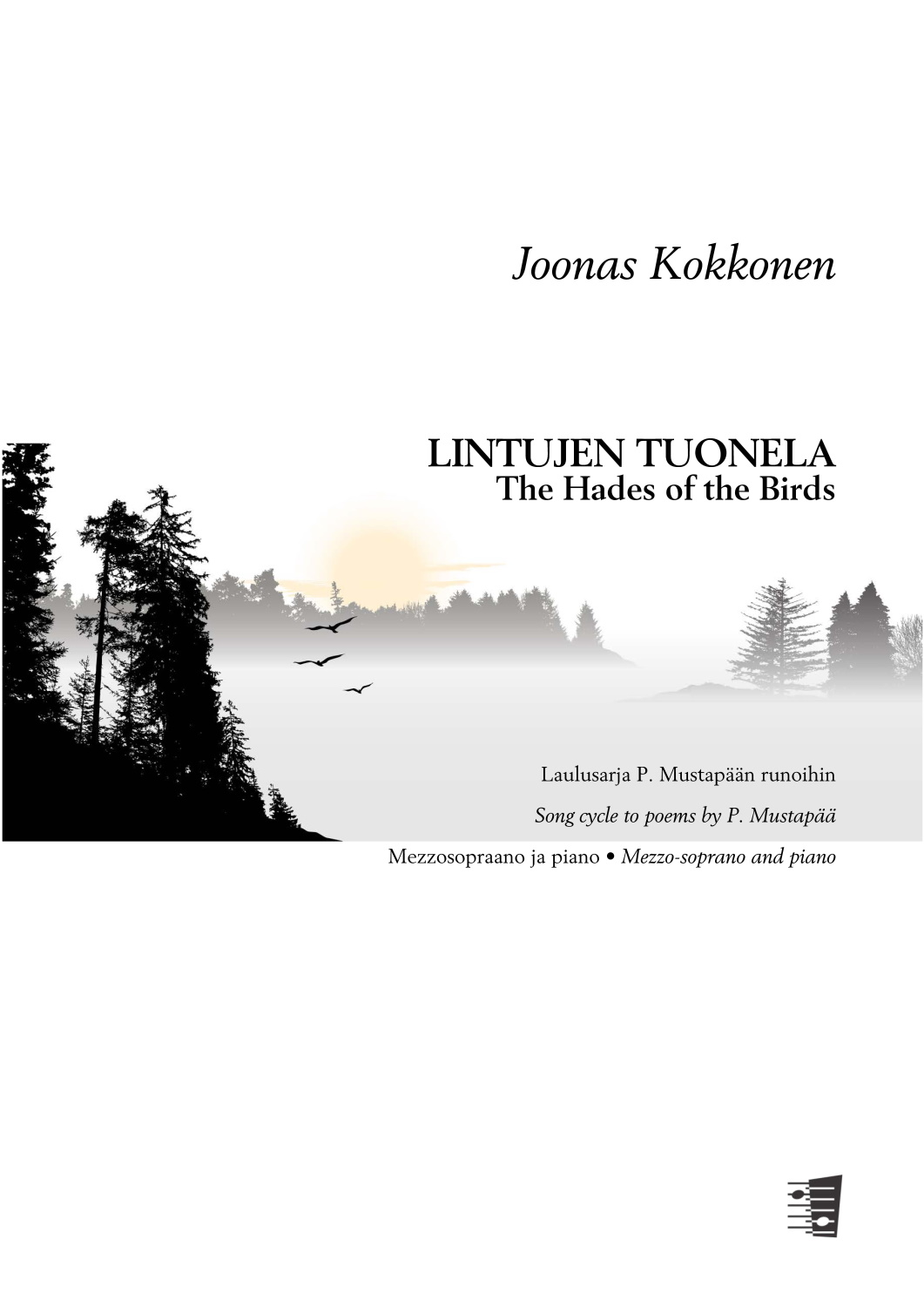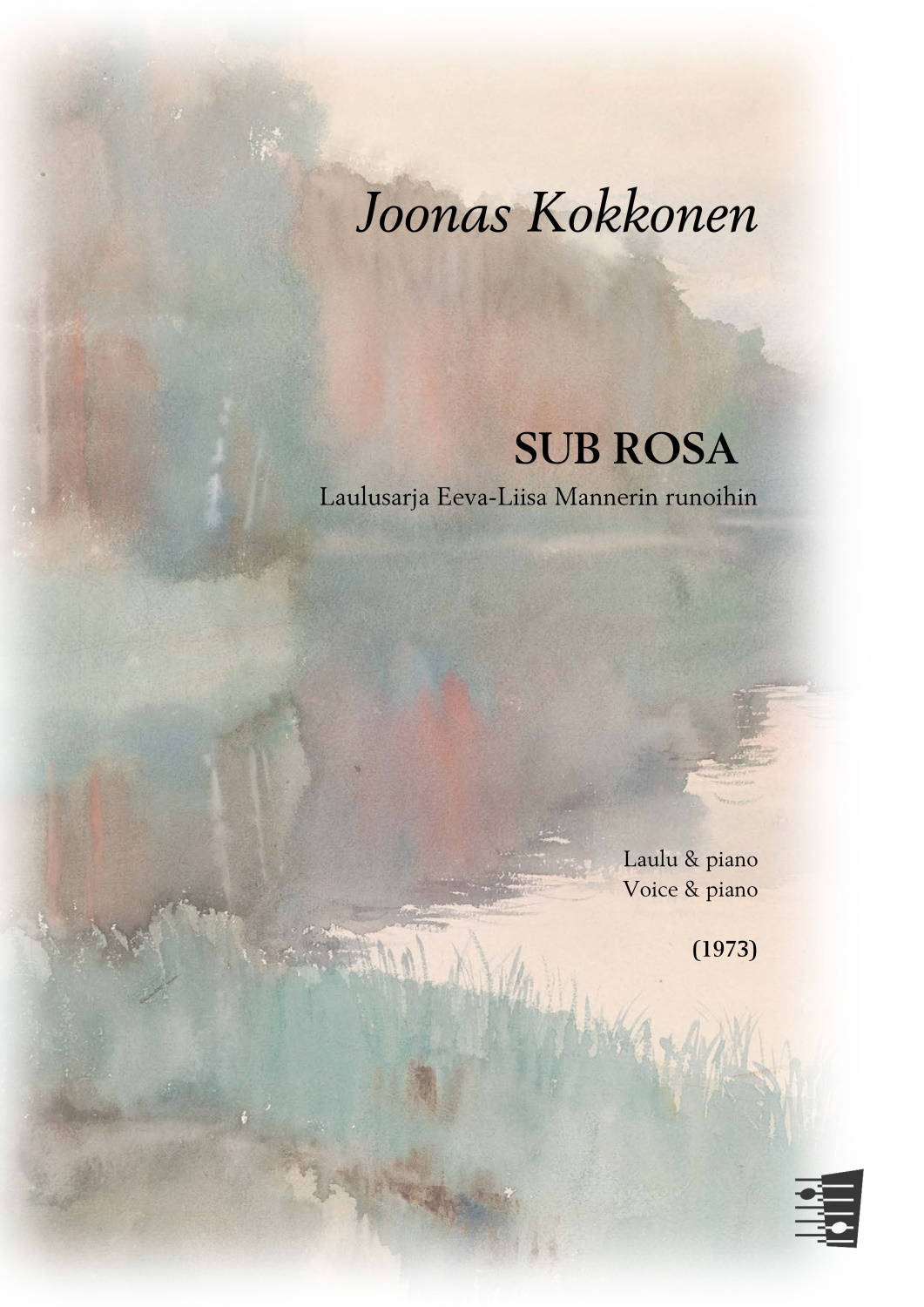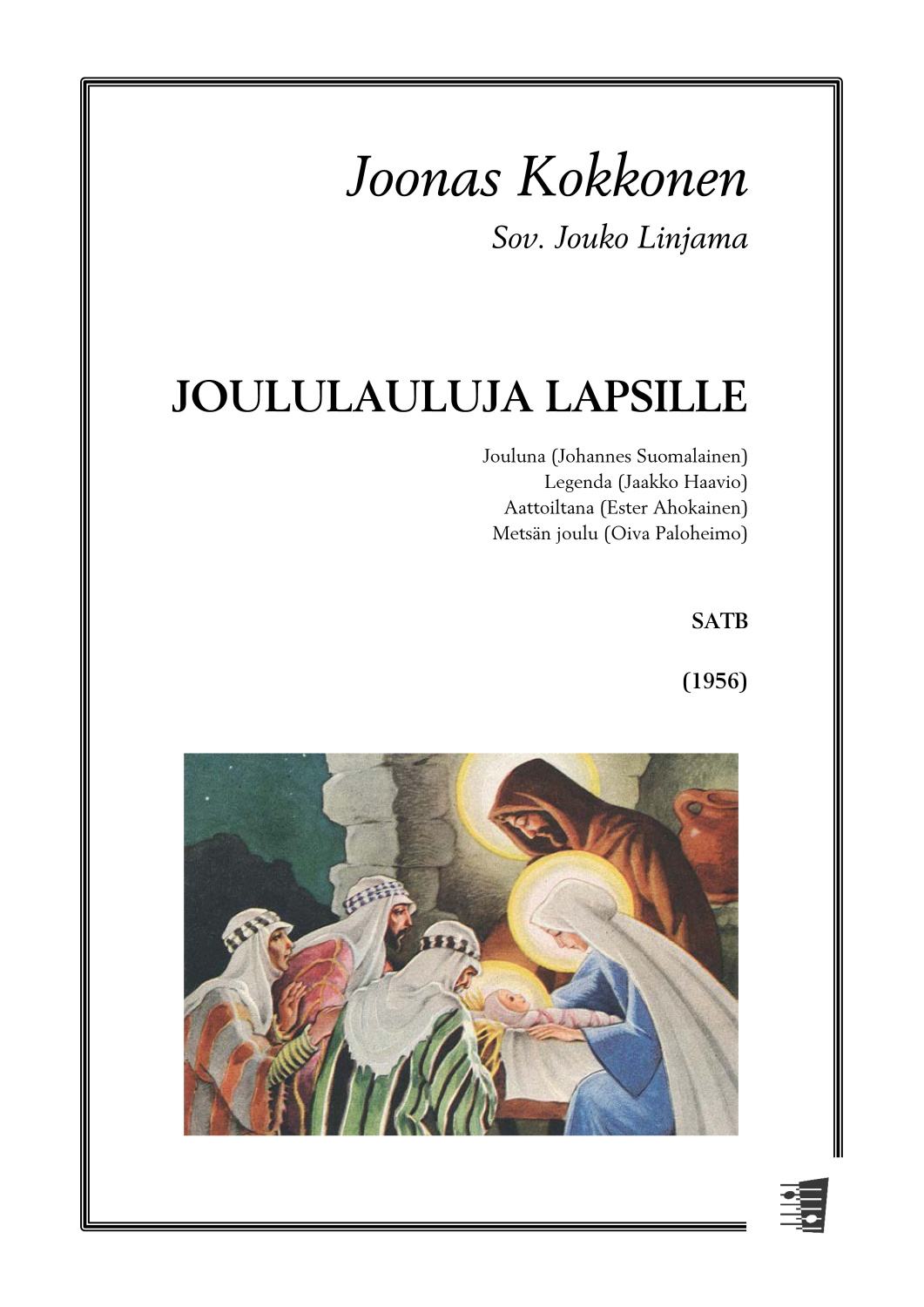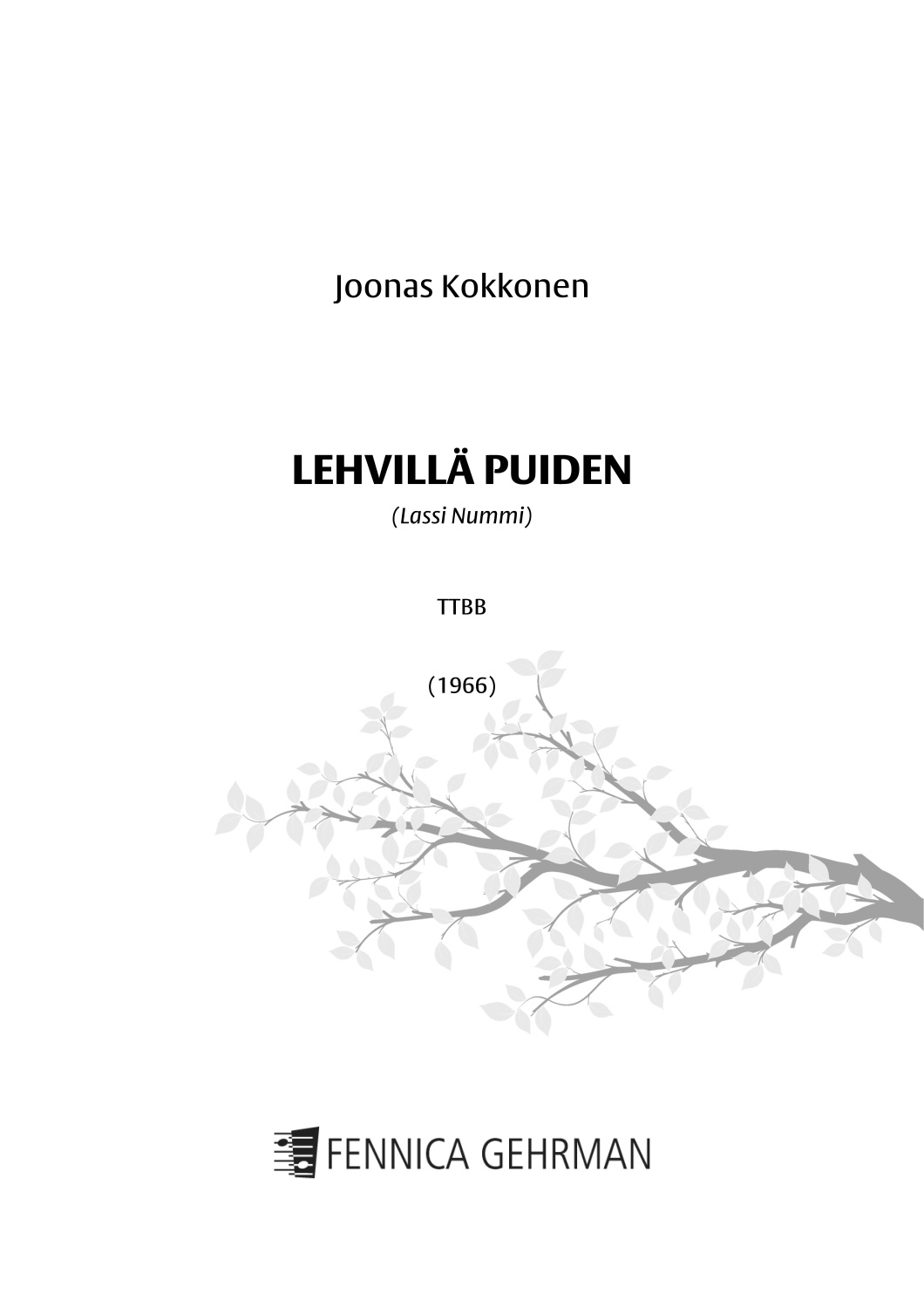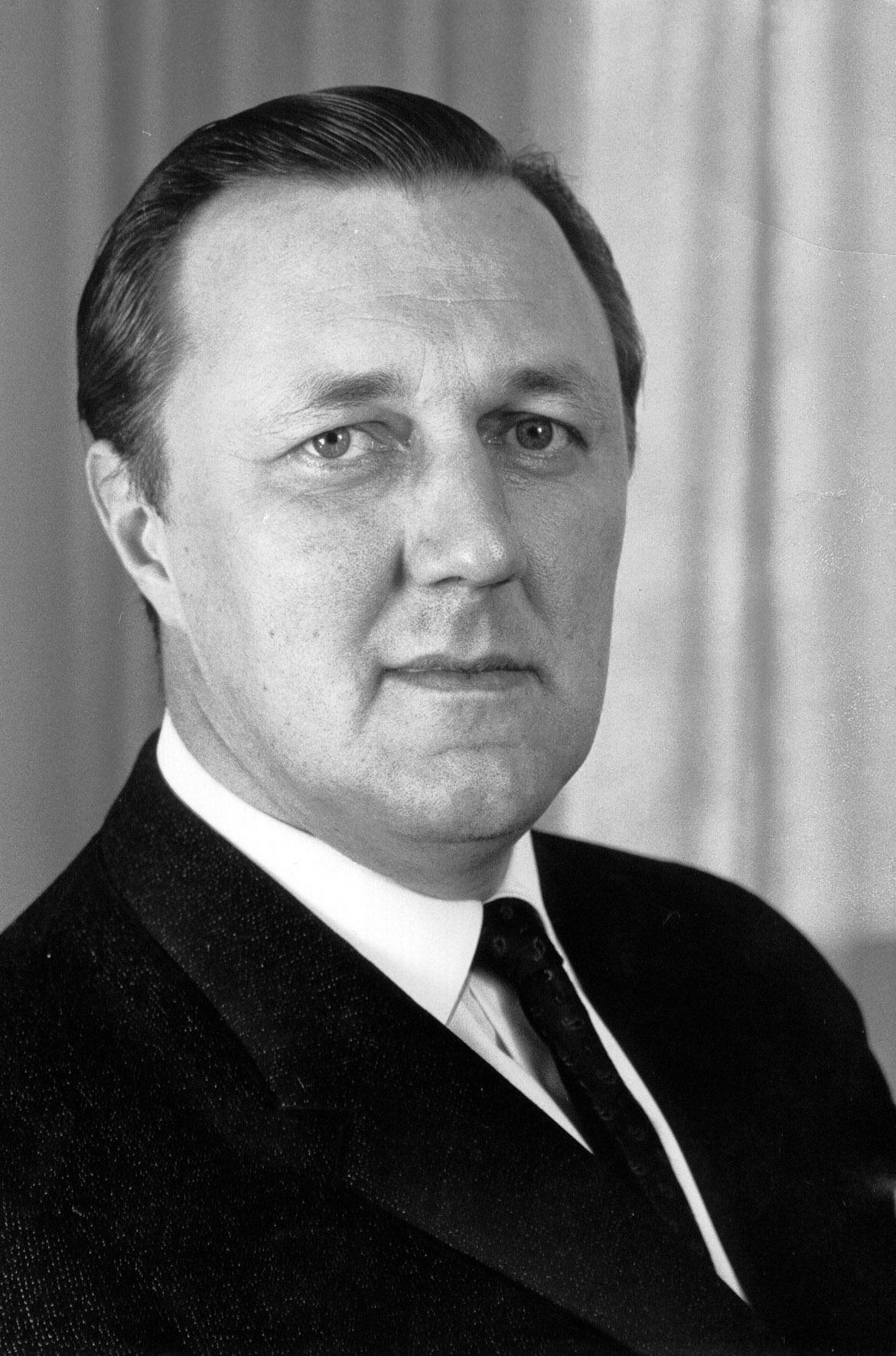
Kokkonen, Joonas
Joonas Kokkonen (13.11.1921-2.10.1996) was one of the dominant figures of the post-war history of Finnish musical life. He was also a leading symphonist who, in addition to composing made a tremendous contribution to his field by serving in numerous important administrative capacities, such as the chairman of Teosto, the Finnish copyright bureau and the chairman of the Nordic Composers Council. Kokkonen was also professor of composition at the Sibelius Academy from 1959 until 1963.
Kokkonen has come to be regarded as the spiritual successor to Sibelius while names such as Bach and Bartók have been proffed as his models. Following an early period of neoclassicism, he turned to 12-tone technique and on via his third symphony (1967) to free tonality. In the 1970s, especially, melody acquired an increasingly prominent position in his music.
Above all Kokkonen is known for the opera The Last Temptations (Viimeiset kiusaukset, 1975). This main work by Kokkonen has won itself a place among one of the most succesful Finnish operas. He composed it during a period of 16 years, and the world premiere was at the Finnish National Opera in September 1975. Since then it has been staged hundreds of times, also on a number of successful tours, and in such illustrious venues as the New York Metropolitan Opera. The libretto by Lauri Kokkonen is about the inner religious conflict of a preacher, Paavo Ruotsalainen, and about his confrontations with the community and even his immediate family.
Kokkonen was not a particularly prolific composer. He first made a name for himself with the Neoclassical Piano Quintet in the 1950s. He wrote three weighty string quartets between 1959 and 1976. Beginning with chamber music, he did not progress to orchestral music – nowadays considered his core genre – until he was nearly 40. Music for String Orchestra was written in 1957, marking his breakthrough as a major orchestral composer. The song cycle Lintujen tuonela (The Hades of the Birds, 1958-59), set to a text by P. Mustapää, was Kokkonen’s first work for a large orchestra
Kokkonen composed four symphonies in all, and they offer an exciting view to Kokkonen’s stylistic development. The first two were written in 1960 and 1961 during Kokkonen’s dodecaphonic period. The third symphony (1967) starts his free tonal period.
One of the early works is Sinfonia da camera (1962) for twelve strings. Commissioned by the Festival Strings of Lucerne, it brough Kokkonen internatonal acclaim. Other orchestral works include the three-movement Opus sonorum (1965), Symphonic Sketches (1968), Inauguratio (1971) and Il paesaggio (1987) for chamber orchestra. Erekhtheion (1969), a cantata written for Turku University, has been hailed as one of the best pieces of ceremonial music written in Finland.
Joonas Kokkonen is also known for his widely-performed Cello Concerto (1969) – the only piece representing the concerto genre in his oeuvre. It was dedicated to Arto Noras.
One of Kokkonen’s most beloved works is the Requiem (1981) for soprano, baritone, mixed chorus and orchestra – a work he wrote in the memory of his second wife, Maija Kokkonen. It is now possible to perform Requiem with soloists, choir and organ thanks to Jouko Linjama’s skilled transcription.
Kokkonen has written few choral pieces, but the ones that exist have become popular repertoire, such as Laudatio Domini (1966) and Missa a cappella (1963), both for mixed choir. Kokkonen has also composed pieces for voice and piano.
The work list also includes a number of important solo and chamber works such as Improvissazione, a virtuoso one-movement piece for violin and piano composed for the Indianapolis International Violin Competition in 1982, Sonata for Cello and Piano (1976), Lux aeterna (1974) for organ, Five Bagatelles (1969) for piano, and Pielavesi, an impressionistic suite for piano from the time when Kokkonen was 18 years.
Concerto for Cello and Orchestra
(1969)
for violoncello and orchestra
2(II+picc)23(III=bcl)2-4220-12-hp-str Perc: Snare drum, Suspended cymbal, Tam-tam (large), Glockenspiel, Xylophone
Duration: 22
Erekhteion
(1969)
for soprano, baritone, mixed chorus and orchestra
2222-4220-12-str
Duration: 16
Il paesaggio
(1987)
for chamber orchestra
1111-1000-str(min 65432)
Duration: 10
Inauguratio
(1971)
for orchestra
3(II&III+picc)3(III=ca)3(III=bcl)3(III=cfg)-4330-13-hp-str
Duration: 8
Joululauluja lapsille
Christmas Songs for Children
for voice or unison choir and orchestra
1111-2000-str 1. Jouluna (G-duuri/major) 2. Aattoiltana (D-molli/minor) 3. Metsän joulu (E-duuri/major) 4. Legenda (H-duuri/B major)
Duration: 7
Jouluna [arr. Wessman]
At Christmas
for brass ensemble
0000-4331-0-0
Duration: 2
Lintujen tuonela
Laulusarja P. Mustapään runoihin (1959)
for mezzo-soprano and orchestra
2222-2200-10-str 1. Täydellisyyden maassa [In the World of Perfection] 3' 2. Lintujen tuonela [The Hades of the Birds] 7' 3. Sade [Rain] 4'
Duration: 14
Music for String Orchestra
Musiikkia jousiorkesterille (1957)
str I Moderato - Più lento - Tempo I (9'00) II Allegro molto - Poco più lento - Tempo I (5'00) III Adagio religioso (8'00) IV Allegro (6'00)
Duration: 28
Opus sonorum
(1963-64)
for orchestra
2(II+picc)23(III=bcl)2-4320-pf-str I Moderato (3'00) II Adagio non troppo (5'00) III Allegro non troppo (4'00)
Duration: 12
Requiem
(1981)
for soprano, baritone, mixed chorus and orchestra
3(I&II+picc;III=afl)3(III=ca)3(III=bcl)3(III=cfg)-4330-12-hp-str Percussione: Gran cassa, 2 Piatti sospesi, Tamtam grande, Campanelli, Campane, Vibrafono
Duration: 38
Sinfonia da camera
(1962)
for string orchestra
str(min.43321)
Duration: 17
Symphonic Sketches
Sinfonisia luonnoksia (1968)
for orchestra
3(II&III+picc)23(III=bcl)2-4330-12-hp-str Percussione: Tamburo piccolo, Gran cassa, Piatto sospeso, Tamtam grande, Silofono, Vibrafono, Campane tubolari
Duration: 14
Symphony No. 1
(1960)
3(III+picc)3(III=ca)3(III=bcl)3(III+cfg)-4330-10-str
Duration: 23
Symphony No. 2
(1961)
for orchestra
3(II+picc;III=afl)3(III=ca)3(III=bcl)3(III=cfg)-4330-10-hp-str
Duration: 22
Symphony No. 3
(1967)
for orchestra
4(III+picc;IV=afl)3(III=ca)3(III=bcl)3(III=cfg)-4330-13-hp-pf(+cel)-str Percussione: Tamburo piccolo, Gran cassa, Piatto sospeso, Tamtam grande, Campanelli, Silofono, Vibrafono, Campane tubolari
Duration: 21
Viimeiset kiusaukset [Complete opera]
The Last Temptations (1973-75)
Opera in two acts (14 Scenes)
Libretto by Lauri Kokkonen Main roles: STBarB Side roles: SMsATBarB Mixed choir, Ballet 2 speaking roles 2(I&II+picc)2(II+ca)3(III=bcl)2(II+cfg)-4330-12-hp-cel-str(min.86443) Percussione: I: Tamburo piccolo, Piatti, 2 Piatti sospesi (piccolo & grande), Tamtam grande, Silofono II: Gran cassa, Tamtam piccolo, Campanelli, Campane tubolari, Triangolo, Legno
Duration: 130
Viimeiset kiusaukset. Interludit
Interludeja oopperasta Viimeiset kiusaukset (1977)
for orchestra
2(II+picc)23(III=bcl)2-4330-12-hp-cel-str Percussione: Tamburo piccolo, Gran cassa, 2 Piatti (piccolo & grande), 2 Tamtams (piccolo & grande), Campanelli, Silofono, Triangolo, Blocco di legno
Duration: 17
Viimeiset kiusaukset. Ukko-Paavon virsi
sovitus puhallinorkesterille (1975)
for wind band
Duration: 5
Viimeiset kiusaukset: Paavon I monologi
"En saa ovea auki..." Act I: Scene 6 (1975)
opera excerpt for bass and orchestra
223(III=bcl)2-4330-12-hp-cel-str Percussione: Tamburo piccolo, Gran cassa, 2 Piatti sospesi (piccolo & grande), 2 Tam-tams (piccolo & grande), Campanelli, Silofono, Campane, Triangolo
Duration: 8
Viimeiset kiusaukset: Paavon II monologi
"Minun on vielä ennen kuolemaani" Act II: Scene 6 (1975)
opera excerpt for bass and orchestra
22(II=ca)3(III=bcl)2(II=cfg)-4310-12-hp-cel-str Percussione: 2 Piatti sospesi (piccolo & grande), 2 Tam-tams (piccolo & grande), Campanelli
Duration: 5
Viimeiset kiusaukset: Paavon virsi (loppukuoro)
"Sinuhun turvaan Jumala"
opera excerpt for mixed choir and orchestra
223(III=bcl)2(II+cfg)-4330-12-hp-cel-str Percussione: Tamburo piccolo, Campanelli, Campane tubolari
Duration: 5
Viimeiset kiusaukset: Riitan kuolema
"Kuinka voit? - Kolmeen vuoteen..." Act I: Scene 8
opera excerpt for soprano, bass, tenor and orchestra
223(III=bcl)2-4330-12-hp-cel-str Percussione: 2 Piatti sospesi (piccolo & grande), 2 Tam-tams (piccolo & grande), Campanelli
Duration: 11
Il paesaggio for chamber orchestra
Inauguratio
Cello Concerto
Symphony No. 1

